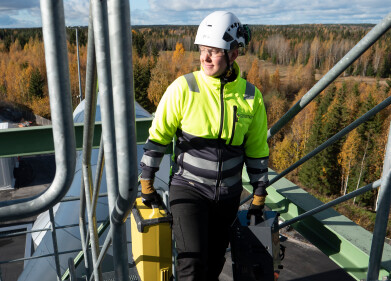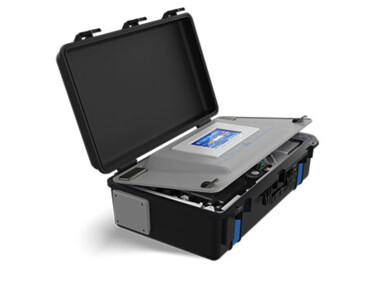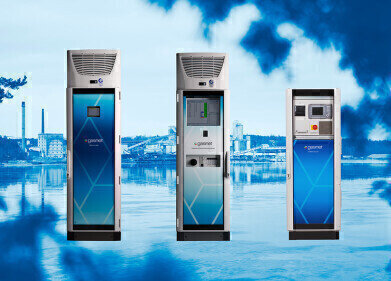-
 Source Testing Association (STA)
Source Testing Association (STA) -

-
 Source Testing Association (STA)
Source Testing Association (STA)
Stack monitoring
Industry benefits from a professional Emission Monitoring trade Association
May 11 2021
The Source Testing Association (STA) was established in 1995 and is organised as a non-profit making organisation serving the emission monitoring industry. The STA has built up a corporate membership of over 150 companies from process operators, regulators, equipment suppliers and test laboratories with an ever increasing interest and growth from overseas companies.
Membership is open to companies that have an interest in emission monitoring and is accessible to all employees within that company.
The STA is committed to the advancement of the science and practice of emission monitoring and to develop and maintain a high quality of service to customers.
Its aims and objectives are to:
- Contribute to the development of industry standards, codes, safety procedures and operating principles;
- Encourage the personal and professional development of practising source testers and students;
- Maintain a body of current sampling knowledge;
- Assist in the maintenance of a high level of ethical conduct;
- Seek co-operative endeavours with other professional organisations, institutions and regulatory bodies, nationally and internationally, that are engaged in source emissions testing.
In the late 1990s, the STA was involved in the standardisation process both with CEN and ISO. Before the STAs involvement there were several poorly written standards in circulation, and at that point, the UK didn't have stack testing professional representing the UK's view on committees. The first committee the STA got involved with was EN 1911, and then EN 13284, being actively engaged in the standardisation process is still one of the most important aims of the STA.
Again in the early 1990s there was no legislation or guidance for the stack testing industry in the UK in regards to Health and Safety, The STA acknowledged this in the late 90s set up the Health and Safety Task Group (HSTG). Days before the initial HSTG meeting a serious incident took place, resulting in the fatality of a stack tester from a fall from height. The incident shook the industry, the STA created the health and safety booklet. The first edition was 12 pages. Following the release and with the input of the HSE, the yellow book was born. The yellow book became the industry standard in the UK, and The Environment Agency adopted it as the industry standard under the MCERTs scheme.
With the STAs involvement in standardisation and health and safety the STA members tasked the Association to produce an endorsement scheme to accredit companies that carry out particulate and gaseous emission monitoring, this became a forerunner of the Environment Agency’s’ (EA) MCERTS scheme.
The primary purpose of the MCERTS scheme was to create a high-quality testing approach. The STA endorsement scheme was the forerunner to the MCERTS Manual Testing scheme.
How did the STA get involved with the MCERTS scheme?
When the EA looked at extending the MCERTS scheme to manual stack monitoring it approached the STA, it was agreed the STA would create the MCERTs scheme for personnel on behalf of the EA.
The STA and its members put together the framework and syllabus for the personnel scheme. MCERTS was formally rolled out in 2002. Since the inception of the MCERTS personnel scheme, the STA has overseen the scheme, this includes being a member of the MCERTS steering committee plus the impartiality committee.
The STA prides itself with the close ties it has with the industry and the regulators this is maintained by the STAs Task groups and sub groups which meet three times a year to discuss any topics relating to the industry, there is representation from all sectors of the industry from, Stack testing companies, process operators, equipment suppliers, consultants, accreditation bodies and regulators from England, Scotland, Wales Northern Ireland and Ireland, each task group is Chaired by a elected officers from the membership, the active task groups are as follows:
- Quality and Technical task group (which includes Sub-groups on low Particulate, HCL monitoring and 14181.)
- Process Operators task group
- Health & Safety task group
- Equipment suppliers task group
Training
The STA has been committed to encourage the personal and professional development of practising source testers and provide training courses on various aspects of emission monitoring.
The training capability has grown over the years following requests from its members to provide independent and impartial training courses.
Current courses include;
- Risk Assessment - Industrial Emission Monitoring
- Regulatory Monitoring Requirements for Process Operators
- On-Site Auditing
- Medium combustion plant Directive (MCPD)
- MCERTS Personnel competency
For more information on the STA and membership please go to their website.
Digital Edition
AET 28.4 Oct/Nov 2024
November 2024
Gas Detection - Go from lagging to leading: why investment in gas detection makes sense Air Monitoring - Swirl and vortex meters will aid green hydrogen production - Beyond the Stack: Emi...
View all digital editions
Events
Jan 12 2025 Abu Dhabi, UAE
Jan 14 2025 Abu Dhabi, UAE
Jan 20 2025 San Diego, CA, USA
Carrefour des Gestions Locales de L'eau
Jan 22 2025 Rennes, France
Safety, Health & Wellbeing LIVE
Jan 22 2025 Manchester, UK


















